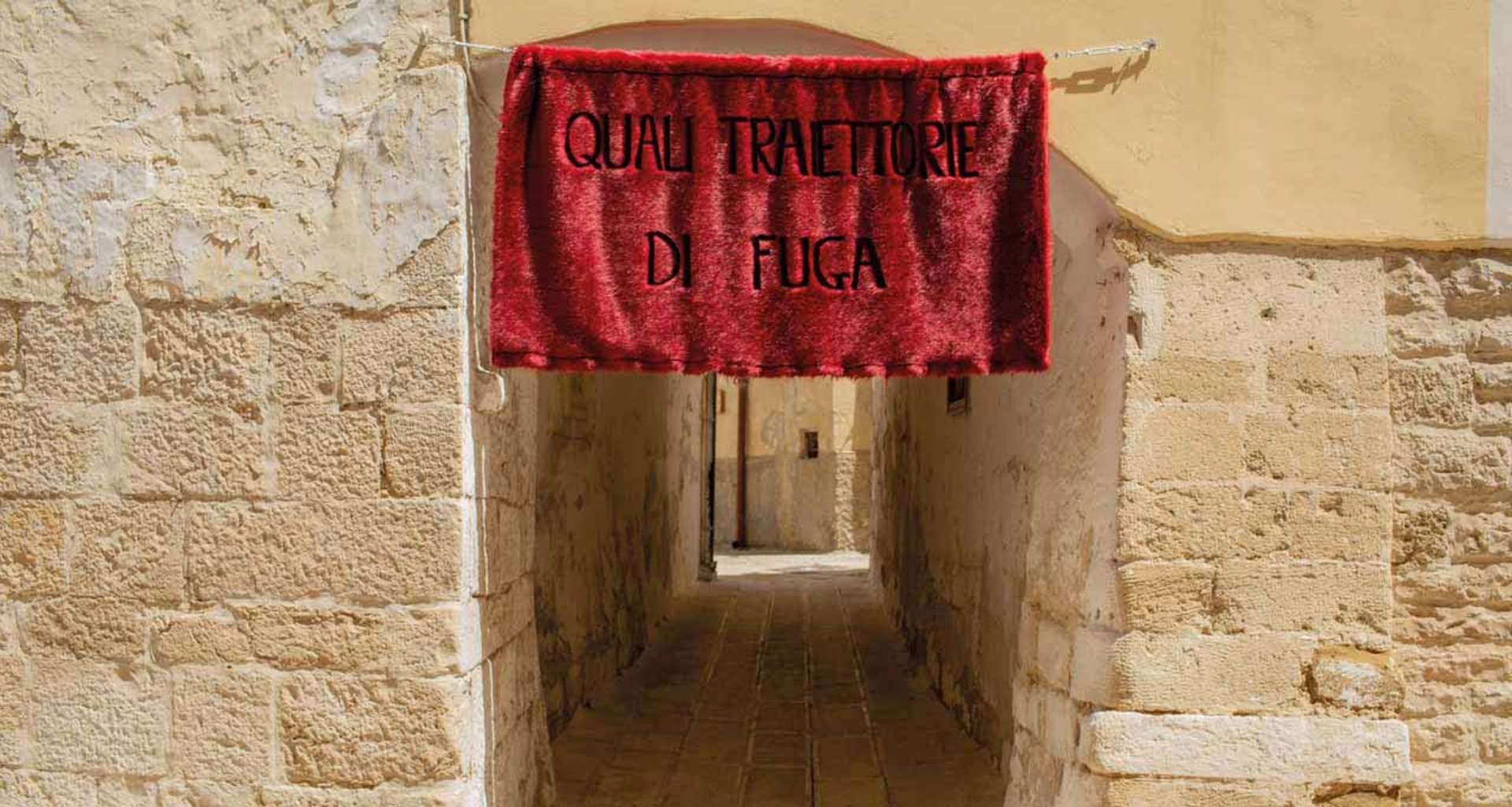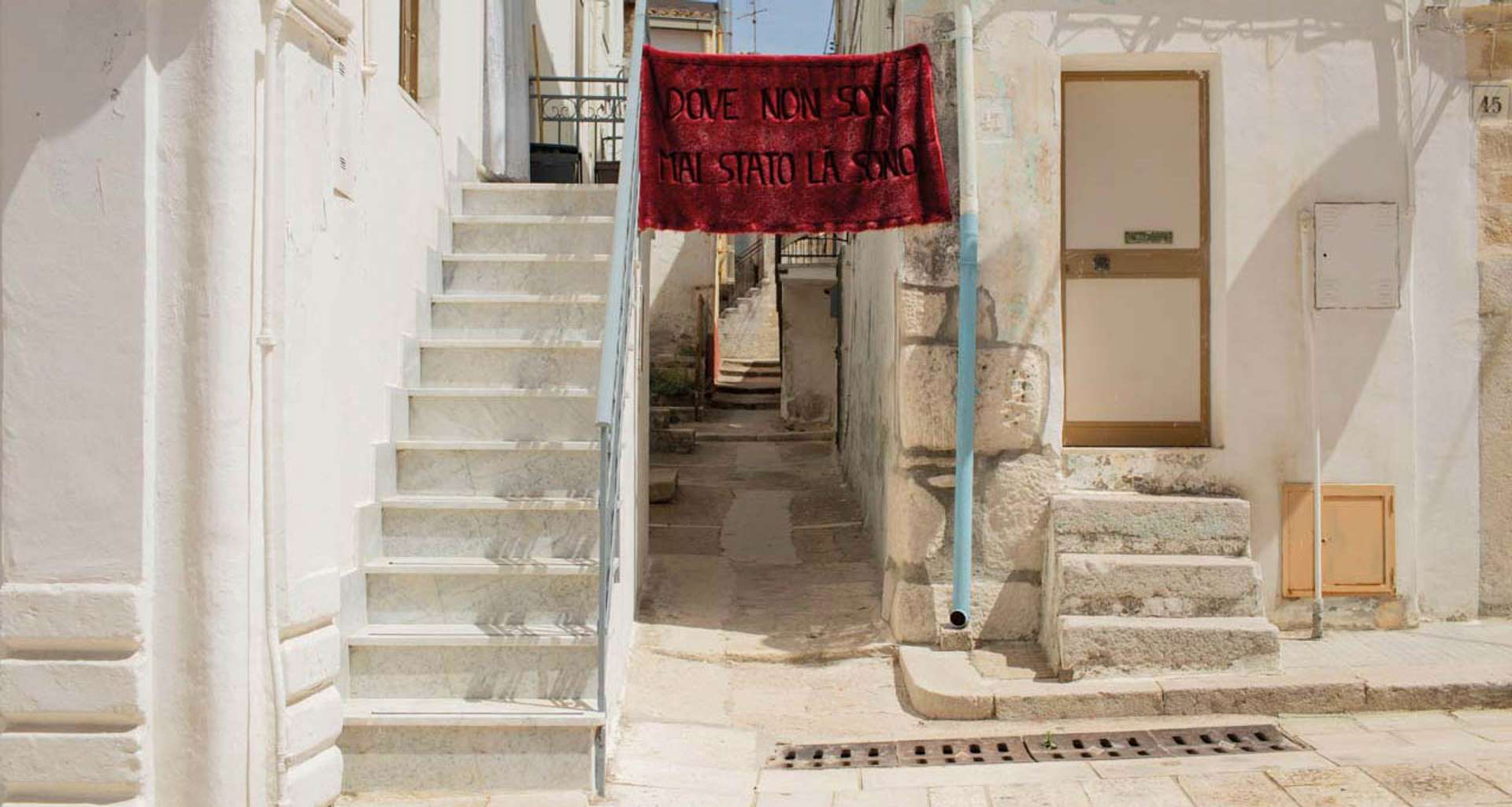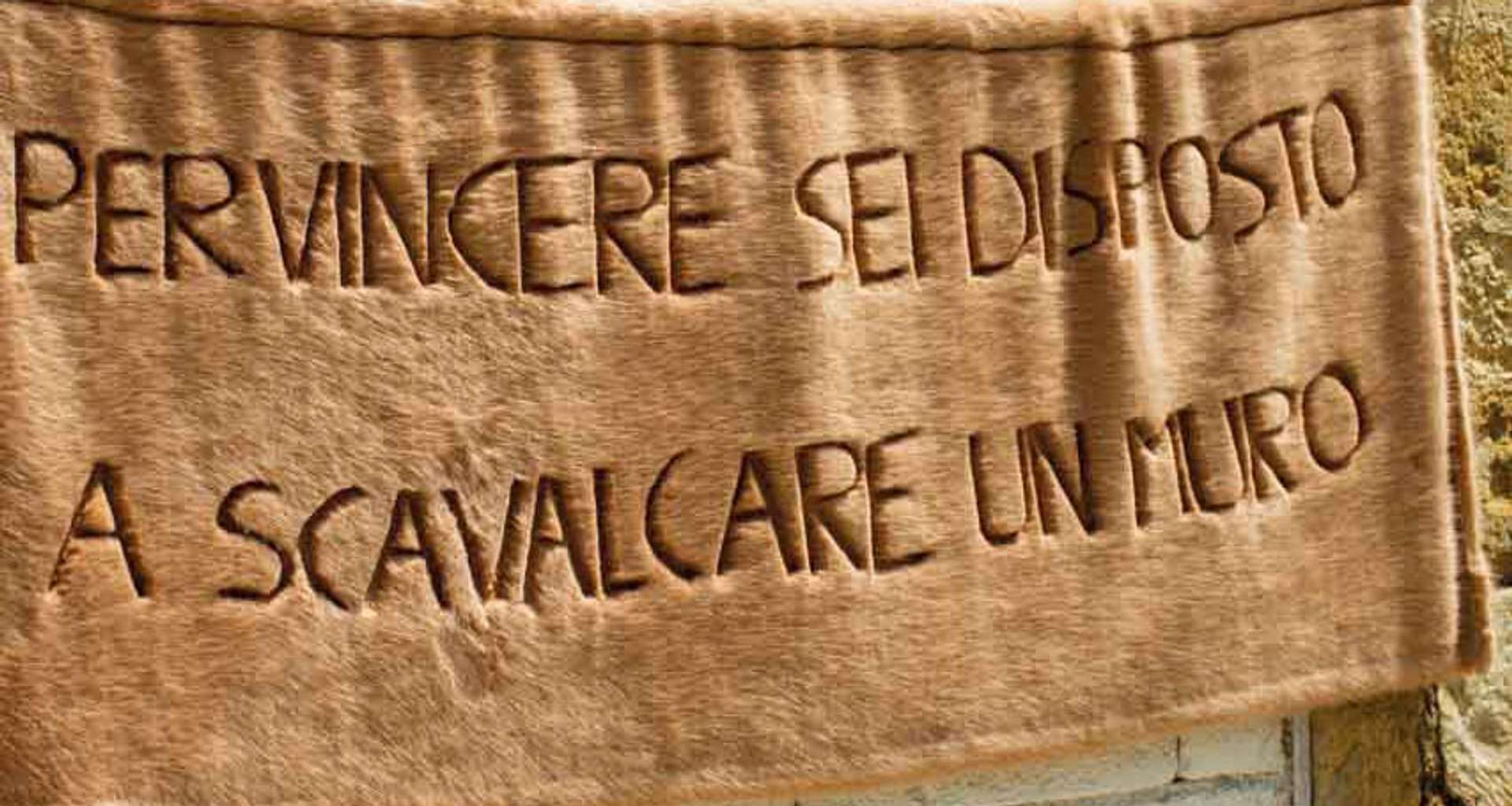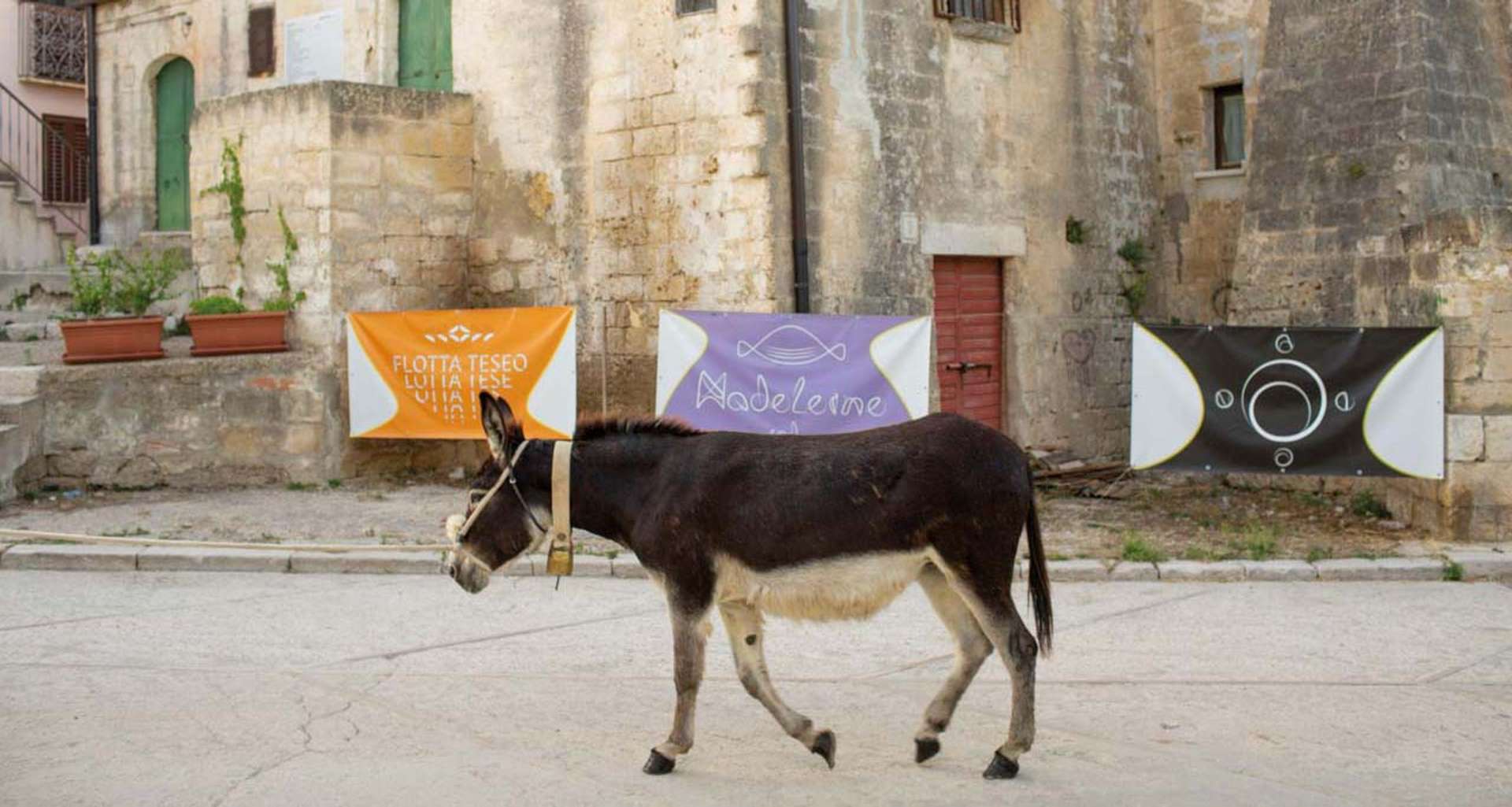A marathon is an event with a disruptive charm, it simultaneously enlivens and paralyses entire cities by involving runners, residents and visitors in a circular and temporary dimension in which social cohesion and competitive competition coexist. Starting from these reflections, Simone Bacco proposes a multi-location installation that challenges Spinazzola with the organisation of a real competition that is, in this case, characterised by the impossibility of winning.
Entirely taking place within the 700 meters perimeter of the historic centre of the village, Maratona develops in a setting that evokes both a traditional festival and global sporting events’ technical sponsors, giving rise to a utopian and futuristic aesthetic. Interested in encouraging participation that intersect places and communities, Bacco makes this sporting event a tool for involving citizens in a well-known process whose results are unpredictable. Unexpected, performative and theatrical elements accompany the installation and management of the event, making cheating, improvising and deliberately losing possible. Maratona is suspended between different and rare temporal states. Surrounded by future advertisements involving symbols that we don’t yet recognise, a start finish gateway made of local straw structurally echoes the nearby ruins of the Castle, while more doors invite you to transgress the competition circuit, providing as many experiences to as many participants as possible. In this kaleidoscopic game of perspectives, Maratona focuses on the question of time: the time of the runners’ competition, that of waiting and cheering, but also the time that each of us struggles to obtain in the daily rat race. Isn’t liberation from time the real prize for the marathon?
THE PLURALITY AND FRAGMENTATION OF POTENTIAL SITUATIONS STEM FROM TWO IDEAS: THE FIRST, STRICTLY POLITICAL, CONCERNS A MICROPOLITICS OF DESIRE, IN PARTICULAR WITHIN THE CONTEXT OF COMPETITION; THE SECOND, MORE EXISTENTIAL, CONCERNS TIME, OR THE MENTAL AND PHYSICAL IMMERSION WITHIN STATES OF CONSCIOUSNESS THAT DICTATE OUR AFFECTION TOWARDS THE EXISTING
Simone Bacco (Rome, 1995) lives and works in Rome. “Place” is the central element of Simone Bacco’s research. His practice is characterised by a particular sensitivity towards ruins, and abandoned, damaged or forgotten places. Memory, the end, expectation and temporality are recurring themes in this discourse and are often resolved in their own poetic implementation. Bacco graduated in 2021 from the Biennium of Painting at A.B.A. in Rome. In the same year, he took part in the collective exhibition Carta Koreana curated by Claudio Libero at the Museo Bilotti in Rome and in the SCOPPIO project curated by Federico Arani in Umbria. Alongside his individual experimentation, the artist takes part in a series of collaborative projects: UNCONFORMITY – Laboratorio collettivo di modellazione del reale, comes from a debate with other artists on the desensitisation of the historical period we are currently living through; A PRIORI MAGAZINE, a research magazine that comprises social, cultural and poetic organization between students from ABA and ISIA in Italy developed in collaboration with the Student Council of ABA. in Rome; FUOCHI ALLEGRI, an organization that, through total co-authorship, organizes itinerant, non-profit and self-financed parties. In 2021, he co-founded the PORTO SIMPATICA project-space, in Rome, together with 8 artists and other cognitive workers.
A MARATHON IS AN EVENT WITH A DISRUPTIVE CHARM, IT SIMULTANEOUSLY ENLIVENS AND PARALYSES ENTIRE CITIES BY INVOLVING RUNNERS, RESIDENTS AND VISITORS IN A CIRCULAR AND TEMPORARY DIMENSION IN WHICH SOCIAL COHESION AND COMPETITION COEXIST
Spinazzola is home to 6,000 inhabitants and it is located in the province of Barletta-Andria-Trani, nestled between Puglia and Basilicata. The village extends over an area of approximately 18,000 hectares, measuring 23 km long and 9 km wide. The Murge and the Appenino Lucano join the Sella di Spinazzola through the Fossa Bradanica, crossed by the Bradano River and its tributaries.
The urban structure of the old medieval village, once fortified and with various access gates, has a pentagonal plan. The city develops on the spur of a hill overlooking the Ulmeta Valley also known as Grava dei Francesi. At the beginning of the 1700s, the city began to expand outside the walls of the old village. The main streets that today bear the names Corso Umberto I and Corso Vittorio Emanuele II came about due to this development.
The local economy is mainly based on agriculture, crafts, mechanical industry and tourism. In recent years, much has been invested in tourism, from the relaunch of the Bauxite Quarries, to the surrounding landscape, the bridge of 12 arches, Historical Fountains (Pilone, Raica, Dirolla, Gadone Turcitano, S. Francesco, Accanata, Casalvecchio, Paredano, San Vincenzo), and in food and wine, with the promotion of local produce such as a special type of sausage called Salsiccia a Punta di Coltello, cardoncello mushroom, legumes, and the production of extra virgin olive oil.







